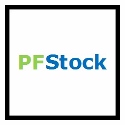According to the Federal Reserve Board, there are a number of loopholes in the Credit CARD Act that need to be closed. The Act, which was passed back in 2009 and implemented over three distinct phases, was created to help protect consumers against unfair practices of credit card companies.
However, there are some lenders who have been looking for other ways to make money despite this new legislation, so they’ve taken advantage of some loopholes that this new law was supposed to protect against. Now, the Fed is looking to stop these companies from circumventing the law’s intent by clarifying the language of the law. But what does this mean for credit card companies and consumers?
Doing Away With Surprise Interest Rate Changes
For starters, credit card issuers will be unable to use semantics to hide from having to give notice to consumers about interest rate changes. Under the law we have today, it is required that credit card companies let card holders know 45 days in advance before raising their rates. And those that offer introductory periods on low APR credit cards have to keep the low rate for the amount of time that was specified, unless the cardholder has failed to make a payment for over 60 days. There are various lenders who have tried to get around this rule, by offering rebates to customers that can be revoked anytime, which then causes the customer to pay a much higher rate.
According to The Wall Street Journal, Citibank was caught playing a game where they would increase the interest rates of their customers to the maximum legal rate of 29.9%,and then offer them up to a 70% rebate on the interest charges if they pay on time. The catch was that Citibank held the right to stop the rebates without giving any notice to its customers.
This practice will be eliminated under the new rules. According to the Fed, any promotions that temporarily eliminate interest charges will be treated the same as promotions that offer reduced rates, and will be subject to the same protections.
Killing the "fee harvesters"
Another loophole that will be closed is the one that will stop credit card companies from stuffing cards with outrageous fees. Under the law we have now, there is a cap on what a customer can be charged during their first year of opening an account. This cap is set at 25% of their credit limit. There are some lenders who have still tried to circumvent this cap with application fees and other such fees, which they claim shouldn’t be capped, since they are being charged before the account is even opened.
According to the WSJ, First Premier Bank was using this loophole to charge an annual fee of $75 and then a $95 processing fee for cards that only had $300 credit limits. The changes that are to come will stop these practices.
Income Requirements Becoming Stricter for Credit
The final change taking place will ensure that customers will not be able to get access to a credit line unless they can really afford it. The Fed is proposing that credit card companies look at an individual’s income instead of the household income to determine their ability to make payments, when increasing their credit limits or opening new accounts. So consumers who have low or no income will need a cosigner in order to open a new account.
Although these new rules are being enforced to better protect the CARD Act, it will not prevent credit card companies from searching for new loopholes to jump through. So the question now is, how will the Fed respond the next time around, and are they always going to be a step behind credit card companies?
About the Author
This post comes from the NerdWallet.com team of personal finance bloggers and experts in helping consumers compare rewards credit cards.
The Complete Guide to ExpertFlyer
1 hour ago


